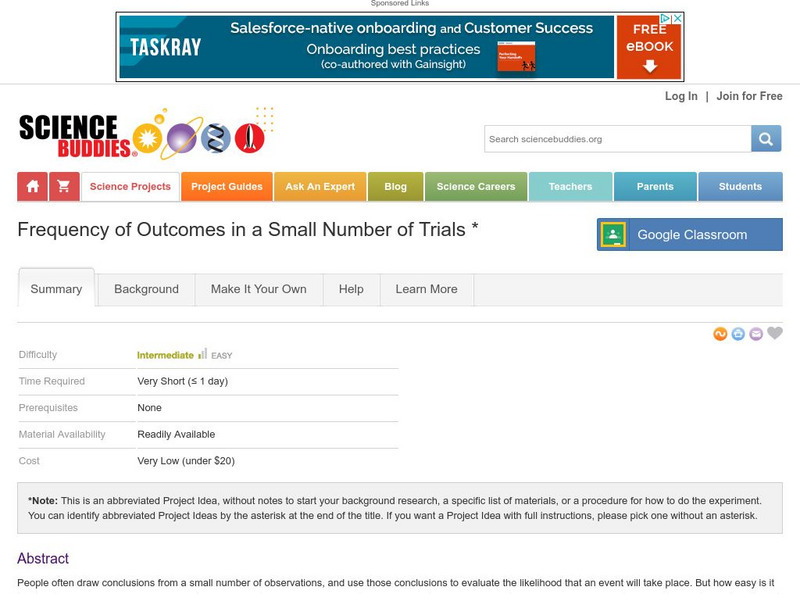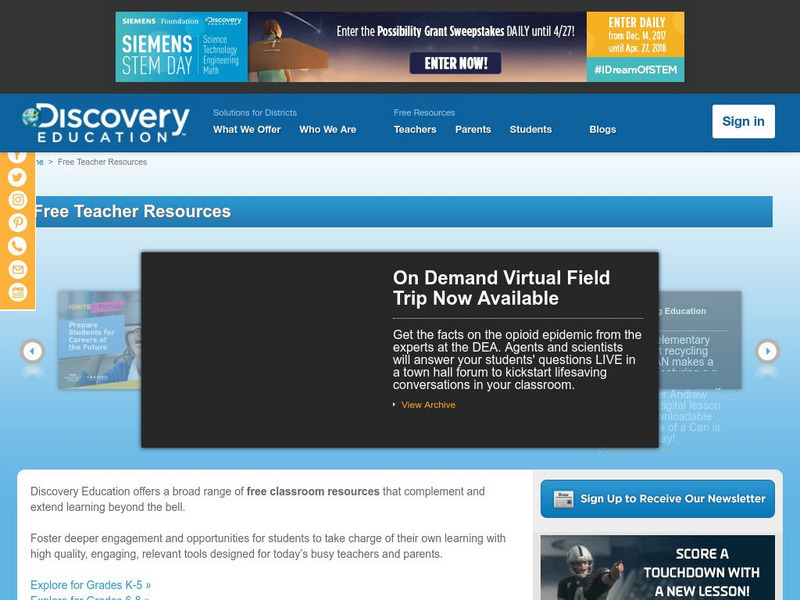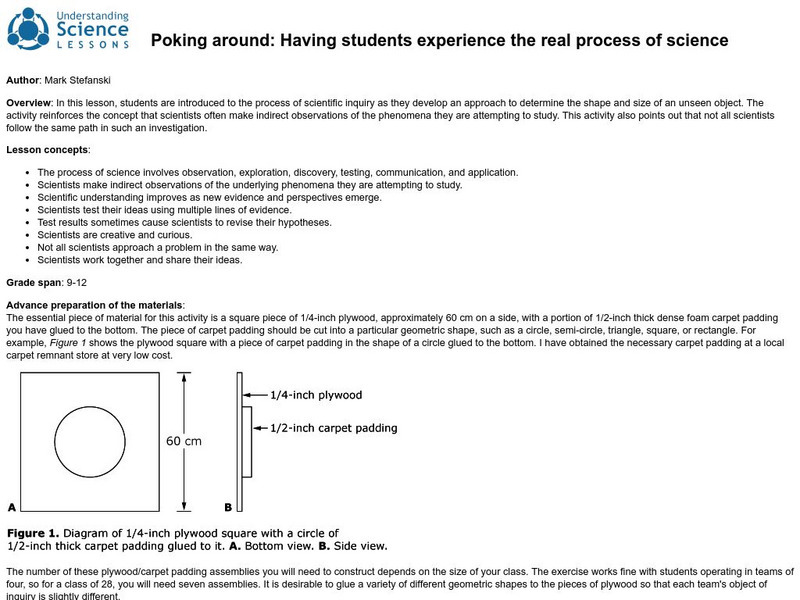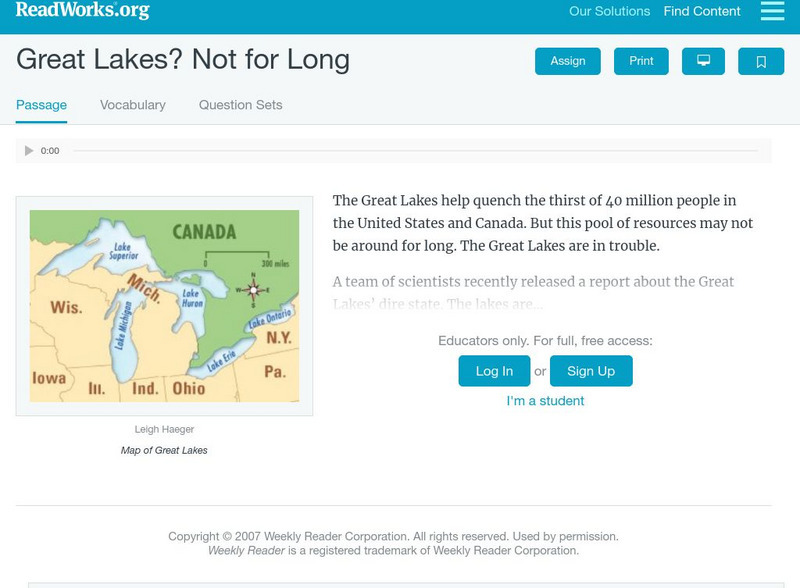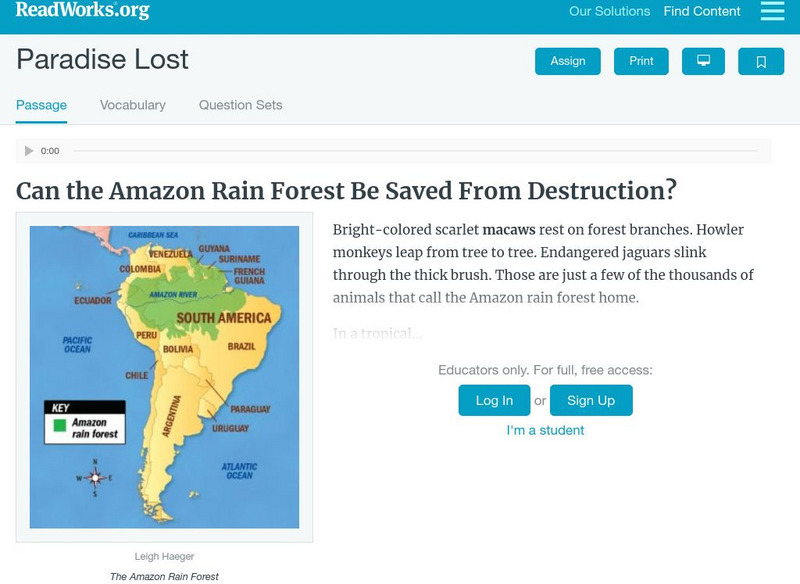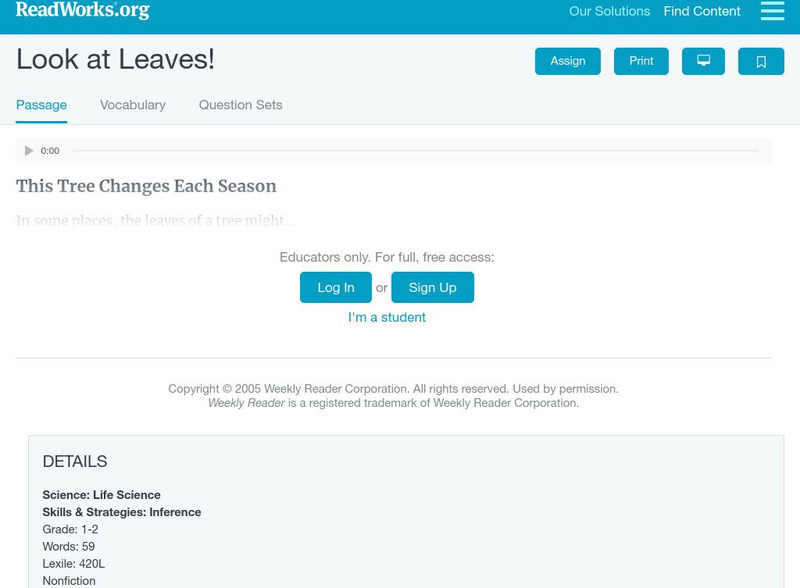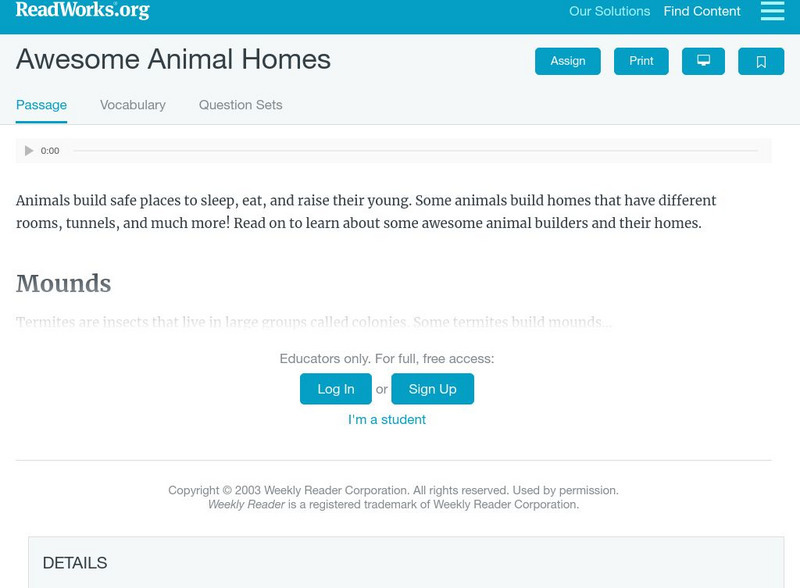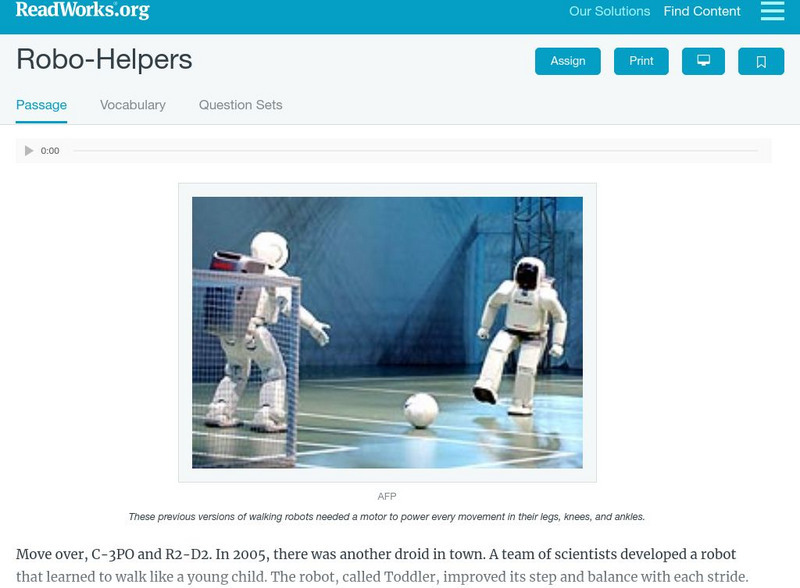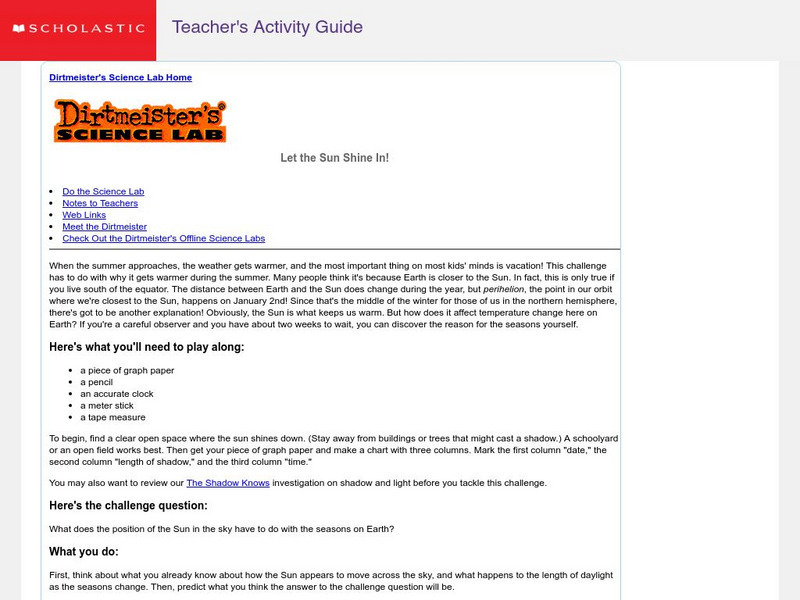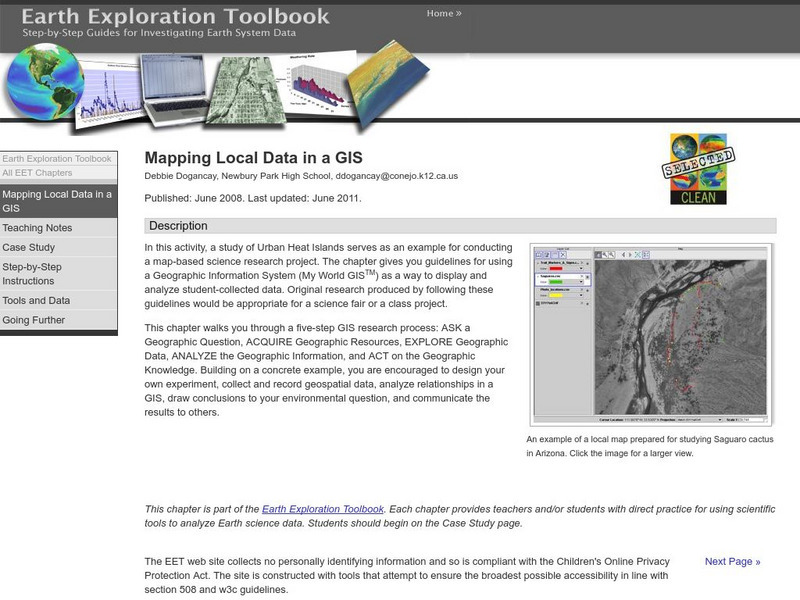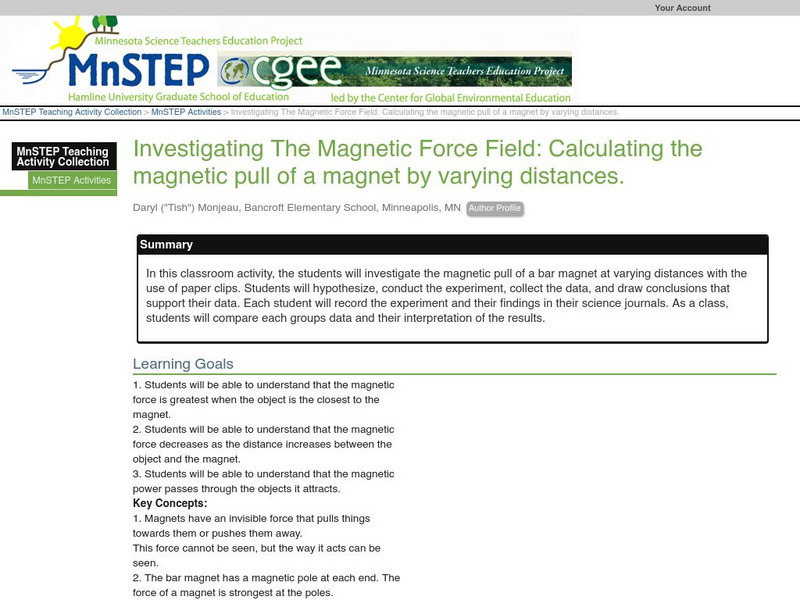University of California
University of California at Berkeley: Understanding Science: Mystery Boxes
An interesting instructional activity where students collaborate to create a visual image of what the inside of a sealed box looks like. The box has a marble or other type of sphere inside it, as well as partitions and/or ramps. Students...
Utah Education Network
Uen: Dissolving Sugar Class Science Fair Project
Second graders work together as a class to generate a science fair project.
Science Buddies
Science Buddies: Frequency of Outcomes in a Small Number of Trials
People often draw conclusions from a small number of observations, but how easy is it to draw the wrong conclusion? Here is a simple project that shows the importance of making enough observations before making a prediction.
Discovery Education
Discovery Education: Science Fair Central: Investigation Project Steps
Read and print out steps that will help you with your science fair project, from topic forming and researching to analyzing and drawing conclusions..
University of California
University of California at Berkeley: Understanding Science: Poking Around
Learners work in groups to develop an understanding of the size and shape of an object hidden beneath a plywood board, asking questions, testing their reasoning, and drawing conclusions, as scientists do. Students are never permitted to...
Other
Peoples Education: Make Inferences in Science [Pdf]
This online textbook selection focuses on how scientists make inferences from evidence. Students are given a reading passage about underwater exploration and are asked to make inferences based on the text. The passage is followed by...
Read Works
Read Works: Rain Forest Rescue
[Free Registration/Login Required] Students read about how the Amazon rain forest and how Brazil is trying to protect it. A question sheet is available to help students build skills in drawing conclusions.
Read Works
Read Works: Great Lakes
[Free Registration/Login Required] Students read about environmental issues causing problems for the Great Lakes. A question sheet is available to help students build skills in drawing conclusions.
Read Works
Read Works: Paradise Lost
[Free Registration/Login Required] Students read about how the Amazon rain forest and some of the animals living there. A question sheet is available to help students build skills in drawing conclusions.
Read Works
Read Works: Look at Leaves
[Free Registration/Login Required] Students read about how the leaves on trees change from season to season. A question sheet is available to help students build skills in drawing conclusions.
Read Works
Read Works: Super Survival Skills
[Free Registration/Login Required] Students read about how different types of fish are able to defend themselves and survive in their environments. A question sheet is available to help students build skills in drawing conclusions.
Read Works
Read Works: Awesome Animal Homes
[Free Registration/Login Required] Students read about how different types of animal homes, including mounds, nests, burrows, and lodges. A question sheet is available to help students build skills in drawing conclusions.
Read Works
Read Works: Spiders and a Balanced Diet
[Free Registration/Login Required] Students read about how spiders choose to eat a balanced diet. A question sheet is available to help students build skills in drawing conclusions.
Read Works
Read Works: Robo Helpers
[Free Registration/Login Required] Students read about new robots that learn to walk like humans. A question sheet is available to help students build skills in drawing conclusions.
Other
Science Fair Primer: Reporting the Results
A good explanation of the elements of a good science fair report written by a high school science teacher. Details are given step by step on stating the hypothesis, explaining the experimental procedure, presenting the data attained, and...
American Geosciences Institute
American Geosciences Institute: Earth Science Week: Mineral Electrical Conductivity
The purpose of this activity is to test the conductivity of various minerals with a simple electrical circuit and draw conclusions about which ones would be used in electronics.
Scholastic
Scholastic: Dirtmeister's Science Lab: Let the Sun Shine In
Students graph data reflecting time of day and length of shadow, and then draw conclusions about Earth's seasons and position in relation to the Sun.
Other
The Habitable Planet Simulation
This activity is designed to accompany an interactive on the Annenberg Learner website. Students investigate the changes that take place in an ecosystem when they alter the organisms in a food web. As they work with the simulation, they...
Science Education Resource Center at Carleton College
Serc: Mapping Local Data in a Gis
In this activity, students will learn how to conduct a map-based science research project using a Geographic Information System (GIS). They will design an experiment, collect and record geospatial data, analyze geospatial relationships...
National Health Museum
Access Excellence: The Blackout Syndrome
Become a medical investigator trying to solve the cause of a mysterious disease. Through a four-part mystery series, students try to figure out the source of the disease and how to treat it. By reading clues students make predictions and...
PBS
Pbs Learning Media: Disappearance of the Bees What's the Impact?
The disappearance of bees will have tremendous impact upon the way we live according to scientists in this segment from Nature.
PBS
Pbs Learning Media: Colony Collapse Disorder
In this video segment from Nature, scientists work to discover why bees are disappearing. [2:39]
Other
College of the Holy Cross: The Logic of Scientific Reasoning [Pdf]
Explore the idea of the logic of scientific reasoning with this discussion of how science, thinking, and reasoning relate to one another.
Science Education Resource Center at Carleton College
Serc: Investigating the Magnetic Force Field: Calculating Magnetic Pull
For this classroom activity, the students will investigate the magnetic pull of a bar magnet at varying distances with the use of paper clips. Students will hypothesize, conduct the experiment, collect the data, and draw conclusions that...


